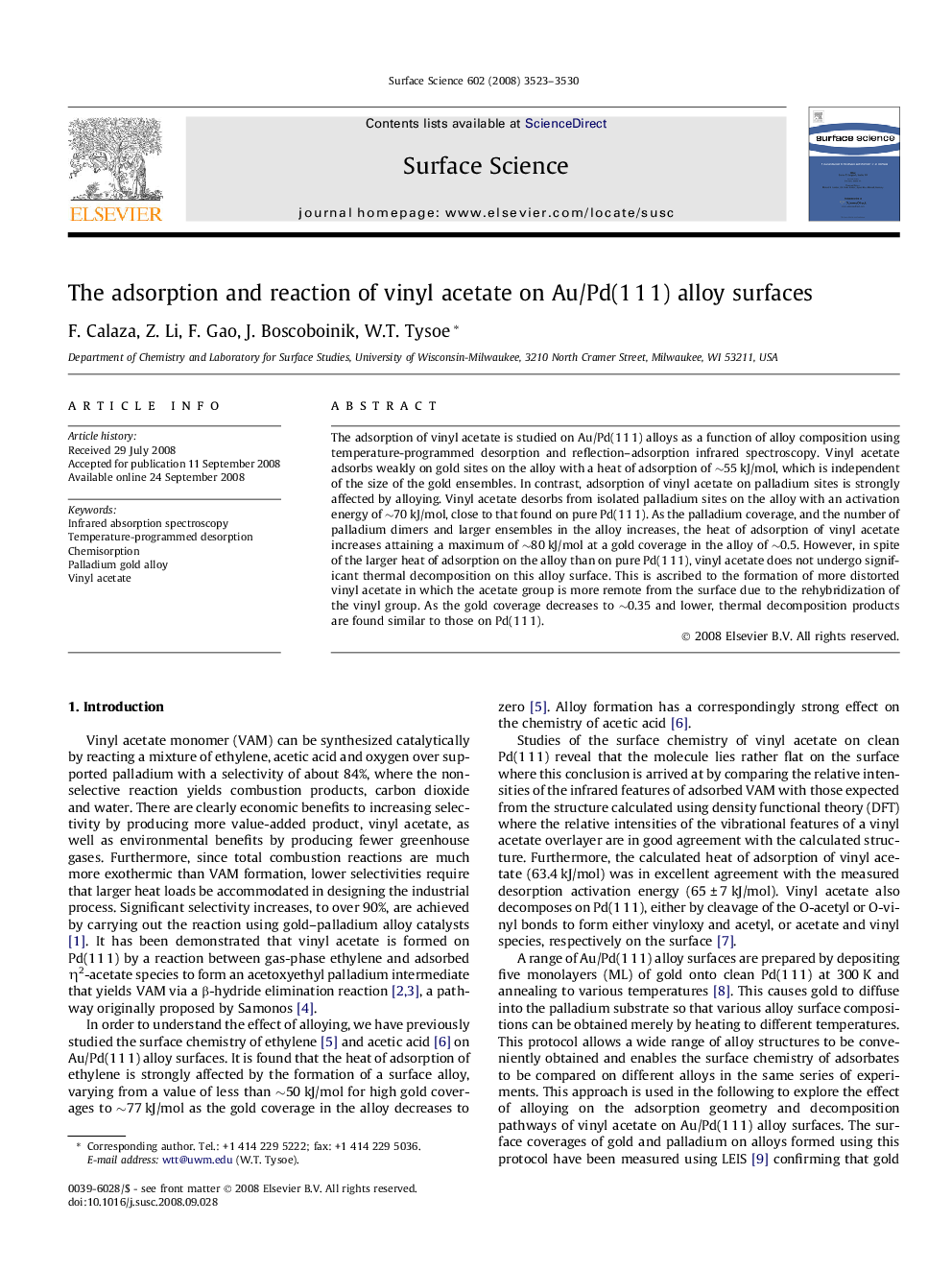| Article ID | Journal | Published Year | Pages | File Type |
|---|---|---|---|---|
| 5424444 | Surface Science | 2008 | 8 Pages |
Abstract
The adsorption of vinyl acetate is studied on Au/Pd(1Â 1Â 1) alloys as a function of alloy composition using temperature-programmed desorption and reflection-adsorption infrared spectroscopy. Vinyl acetate adsorbs weakly on gold sites on the alloy with a heat of adsorption of â¼55Â kJ/mol, which is independent of the size of the gold ensembles. In contrast, adsorption of vinyl acetate on palladium sites is strongly affected by alloying. Vinyl acetate desorbs from isolated palladium sites on the alloy with an activation energy of â¼70Â kJ/mol, close to that found on pure Pd(1Â 1Â 1). As the palladium coverage, and the number of palladium dimers and larger ensembles in the alloy increases, the heat of adsorption of vinyl acetate increases attaining a maximum of â¼80Â kJ/mol at a gold coverage in the alloy of â¼0.5. However, in spite of the larger heat of adsorption on the alloy than on pure Pd(1Â 1Â 1), vinyl acetate does not undergo significant thermal decomposition on this alloy surface. This is ascribed to the formation of more distorted vinyl acetate in which the acetate group is more remote from the surface due to the rehybridization of the vinyl group. As the gold coverage decreases to â¼0.35 and lower, thermal decomposition products are found similar to those on Pd(1Â 1Â 1).
Keywords
Related Topics
Physical Sciences and Engineering
Chemistry
Physical and Theoretical Chemistry
Authors
F. Calaza, Z. Li, F. Gao, J. Boscoboinik, W.T. Tysoe,
